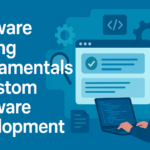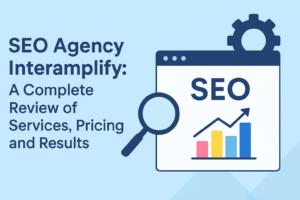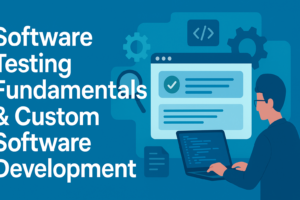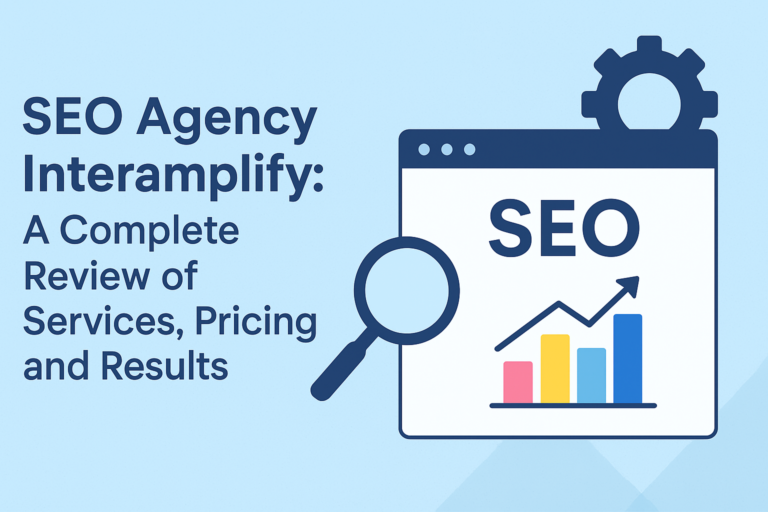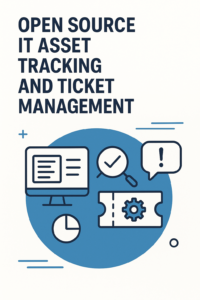Artificial Intelligence (AI) is no longer confined to tech companies. If you’re running a business today, you’re probably hearing a lot about tech upgrades. Most of it sounds like fluff. But there’s one thing that’s actually been making a real difference for a lot of teams—plug-ins powered by AI.
This isn’t about replacing your team with tech. It’s about making the tools you already rely on a little sharper. Less grunt work. Smarter processes. Fewer wild guesses when making decisions.
So what are these plug-ins, how do they actually help, and how do you get started without flipping your whole system?
What Plug-Ins Really Do
They’re small add-ons you hook into your current software. Nothing fancy. Just something that gives your existing tools a bit more power.

You’re probably already using a CRM, maybe a helpdesk tool, or something for tracking sales. A plug-in connects with those and helps them do a better job. It could mean faster insights or fewer steps for your team.
Like, say your CRM isn’t doing much beyond tracking contact info. Add the right plug-in, and suddenly it starts picking up on customer patterns. Your team sees which leads are worth chasing or which customers need a check-in—without spending hours digging through data.
Why They’re Worth a Look
You’ve got limited time and people. These tools take on the small stuff that piles up—like sorting data, answering basic customer questions, or pulling together reports.
They don’t just save time. They help cut down on mistakes. They notice things your team might miss when they’re swamped. And they don’t need breaks or reminders.
Some companies also find they’re able to respond faster to changes. That can be the edge that keeps customers coming back or helps you win a deal.
Where It Gets Tricky
These tools aren’t magic. If your data’s a mess, they won’t fix that. And your team won’t magically know how to use them. You’ll need to put in some setup time.
Also, not every plug-in is cheap—or useful. Some sound great but don’t actually solve your problems. You’ve got to be picky about what you bring in.
The Tools That Get Used Most
1. Chat Plug-Ins
Live chat used to mean a person at a desk. Now? You can have tools that answer common questions around the clock. They’re not perfect, but they can handle a surprising amount—and they don’t sleep.
It means faster replies for your customers and fewer interruptions for your team.
2. Forecasting Helpers
Trying to guess future demand? These plug-ins look at past numbers and help you plan ahead. Whether it’s inventory or staffing, better forecasting means fewer surprises.
Retailers use them to avoid having too much stock—or not enough—when things get busy.
3. Lead Scorers
Instead of chasing every contact, these tools figure out which leads are more likely to convert. They pull info from emails, sites, or customer records and help your team focus their energy where it matters.
4. AI Interview Platforms
Hiring is a resource-intensive process. An AI Interview Platform can significantly ease this burden. These platforms handle the first cut—checking who has the right skills, even asking a few basic questions.
It saves your HR team hours and gives you a shortlist worth looking at.
Getting AI Plug-Ins Up and Running
1. Start with the Real Issues
Before anything else, figure out where you’re losing time or making mistakes. Is your team stuck doing repetitive tasks? Are reports taking too long? Pinpoint the pain.
Talk to your staff—they know what’s slowing things down. Once you’re clear on the problems, you’ll know what kind of tools to look for.
2. Dig into the Options
After you’ve mapped out your needs, it’s time to start comparing. There are a ton of plug-ins out there. Some are worth it, others aren’t.
Make sure whatever you’re looking at actually fits with the tools you already use. And check the support—bad help can cost you more in the long run than the tool itself.
3. Test Before You Roll Out
Don’t roll the dice on a full launch right away. Start small. Try the plug-in with one team or one process first.
See how it performs, get feedback, and adjust. It’s way easier to fix issues in a pilot than after a full deployment.
4. Show Your Team How to Use It
No tool is helpful if people don’t know how it works. Hold a session, walk through the basics, answer questions. Share a quick guide or a video.
The better your team understands it, the more useful it’ll be.
Getting the Most from the Tools You Choose
1. Keep an Eye on What It’s Doing
Just because it’s plugged in doesn’t mean it’s working the way you hoped. Track things like how much time it’s saving, if it’s helping people move faster, or if it’s still creating friction.
Set some targets and see if the tool is meeting them.
2. Ask People Using It
Talk to your team regularly. Are they actually using the plug-in? Does it help? Is something annoying about it?
Small issues early on can snowball if you ignore them.
3. Stay Informed
Things change fast in tech. A plug-in might roll out new features next month that you don’t even know about unless you’re paying attention.
Check updates, sign up for release notes, and stay connected to the product.
4. Look Ahead
You might only need one plug-in now. But as your business grows, so do your needs. Make sure whatever tools you pick today can work with others tomorrow.
Planning ahead means fewer headaches later.
Looking Toward What’s Next
Change Comes with the Territory
Adding smarter tools shifts how your team works. Some people adapt fast, others need time. That’s normal.
Build a culture where learning new tools isn’t scary—it’s expected.
Don’t Just Buy the Flashiest Option
Get tools that solve actual problems. Not the ones with the most features. Real-world results matter more than pitch decks.
Think about whether the tool makes life easier for your team, not just for IT.
Let People Experiment
Give your team space to explore different ways to use these tools. Sometimes the best ideas don’t come from leadership—they come from the folks using the tool every day.
Encouraging trial and error can spark real improvements.
What’s the Real Payoff?
These plug-ins aren’t about making your company high-tech. They’re about cutting the fluff, fixing time drains, and giving people better tools to get things done.
When used right, they free up space to think, build, sell, support—whatever your focus is. They won’t replace the people behind the work. But they’ll help them do it better.
Final Thought: More Control, Less Chaos
Plug-ins should work for you, not the other way around. They’re meant to take the edge off of everyday problems—whether that’s delays, mistakes, or too much manual work.
Done right, they’ll give your team the room to do what they do best. You don’t have to go all-in on day one. Start where it hurts most. Adjust. Improve. That’s how real progress happens.



